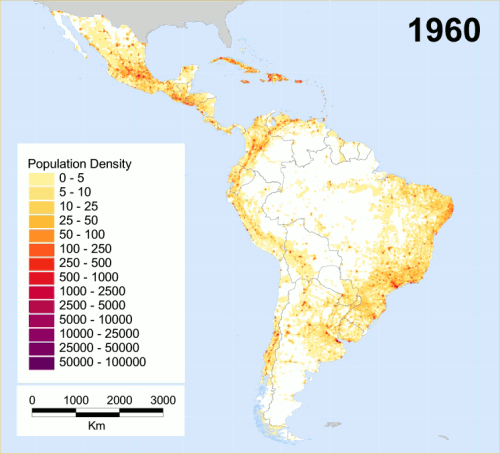For the first time in history there wil be more people living in the city than in rural areas, as evidenced by the figures of the United Nations Population Division (UNPD).
Urbanization, a new trend
The urbanization of the world occurs in an unprecedented pace. Each week the number of city dwellers grows with one million - about 180,000 per day. A growth which is, according to the UN, irreversible.
Today almost 3.3 billion people are already living in urban areas. By 2030, according to the predictions of the UNPD, as much as 5 billion people will be living in cities. That is about 60% of the total global population.
Today South America is the most urbanized continent in the world. Almost 80% of the population lives in urban areas. Predictions of the UN state that by 2030 this proportion will even increase to 88%, rising from 394 to 566 million.
The attractiveness of the city
The industrialized world for a long time was the most urbanized area in the world. The urbanization of the West was started during the first great wave of urbanization, which lasted from 1750 to 1950 and was inspired by the Industrial Revolution.
Urbanization in the eighteenth century originated in the mechanization of the countryside, making fewer and fewer workers were needed, and in a rapidly increasing industrialization in the cities. Seasonal workers, who had less work because of this evolution, were driven to the city looking for work.
Source: Population Databases - UNEP
Urbanization in South America
The second great wave of urbanization that is taking place in the Third World now is radically different from the western urbanization that rose in late eighteenth century. The growth is much more massive and much faster. Elsewhere in the world this growth can be found primarily in smaller cities – cities with fewer than 500,000 inhabitants – but in South America the opposite occurs. There a handful of metropoles is growing at an explosive rate, while the growth in smaller cities is much less significant. Buenos Aires, for example, represents with its 13 million inhabitants one third of the total population of Argentina.
In South America, the rural exodus has other causes than the Western urbanization. Often people were displaced to the city because of armed conflicts and insecurity, failed harvests and climate change effects such as drought and floods. Most newcomers are literally on the edge of society: in slums and shanty towns. There they are often worse off than their compatriots in the countryside. In slums one or more of the basic needs is missing: clean drinking water, proper housing, sanitation, education and health.

Rocinha Favela in Rio de Janeiro, Brazil. Source: Travel Blog

Population growth of Santiago, Chile. Source: Wikipedia
On the image you can see the slums of Rio de Janeiro. In 1950 only 7% of the population of the city lived in the so-called favelas, today that percentage has climbed to 19%. The massive influx of immigrants in a few cities makes it impossible for the government to address the immigrants in a responsible way, with urban sprawl and poor living conditions as a result.
Sources
EarthTrends - World Resources Institute
State of the world population - United Nations Population Fund
United Nations population Division
Verstedelijking: de feiten - NOS.nl
World Regional Geography - Harper College
Links
Earth from Space: Buenos Aires
Slumdog Millionaire, official movie site
World Population Resources
This page was written in 2009, as additional information to the poster series "10 years of Imaging the Earth"